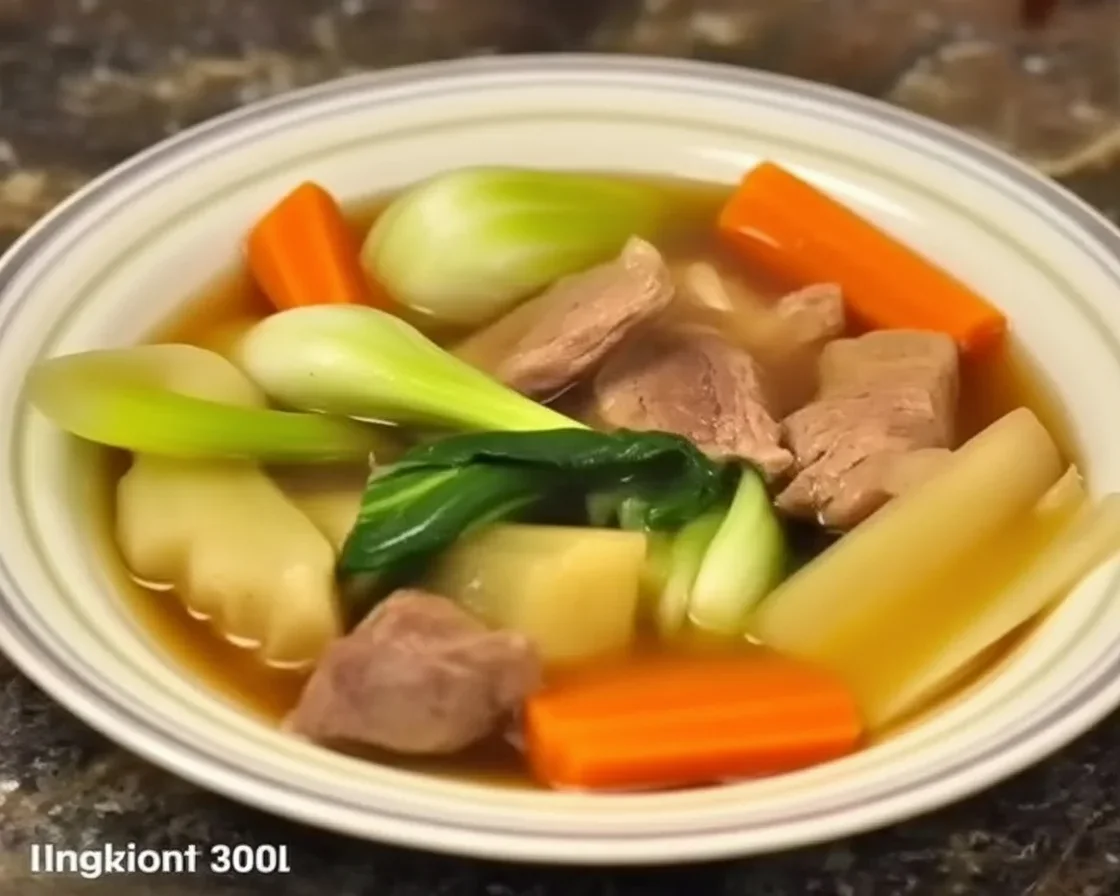If you’ve ever craved something deeply comforting, beef nilaga has probably crossed your mind. When you need a soup that’s hearty, honest-to-goodness, and fuss-free? This dish pretty much does it all. Sometimes you want something as classic as beef bulalo but with a little less marrow madness or maybe as satisfying as beef caldereta without all the tomato sauce. Seriously, if you need the taste of home, beef nilaga is it.
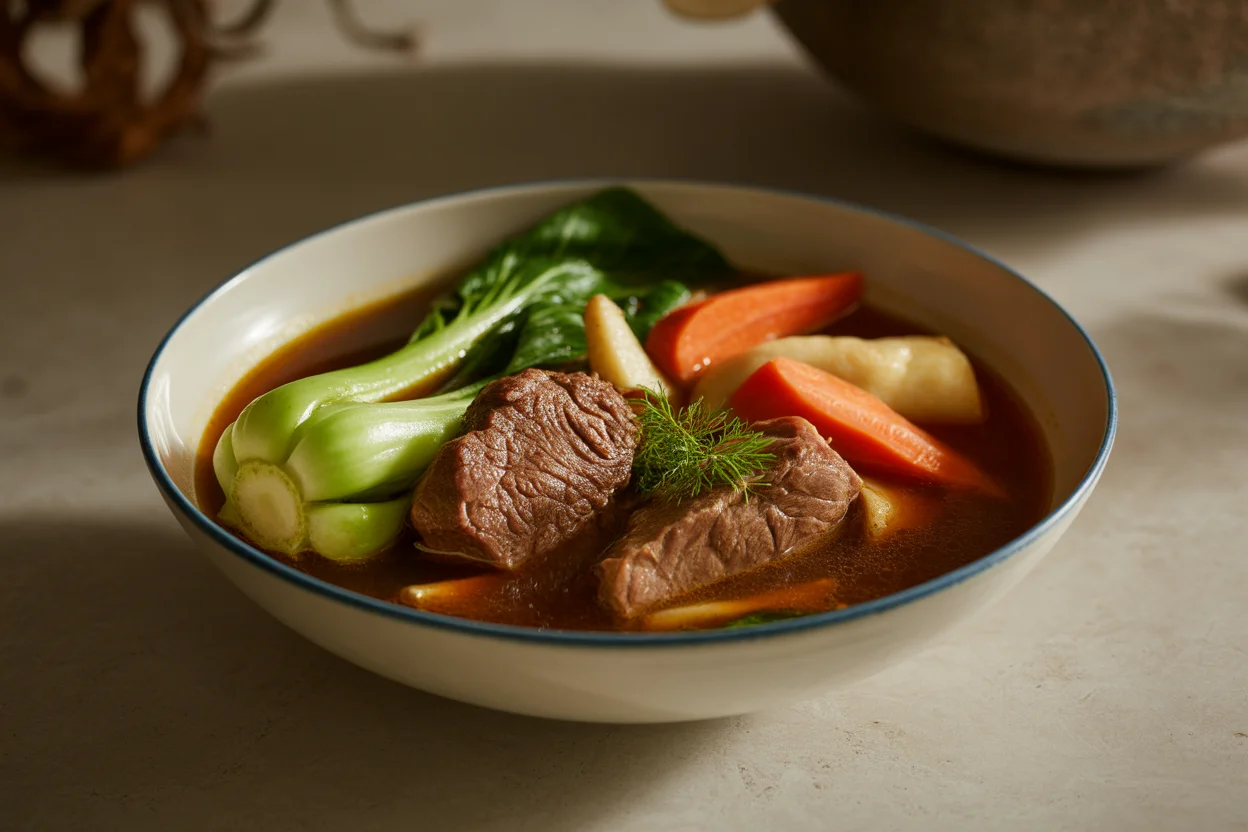
A Brief History of Beef Nilaga
Alright, so here’s the skinny: beef nilaga didn’t just fall out of the sky. This soup has roots going way back in Filipino cuisine, probably as long as folks have had beef, water, and a bunch of vegetables on hand. The word “nilaga” actually just means “boiled” in Tagalog, and it’s honestly the perfect name, right? No crazy steps.
Families would toss whatever beef cuts they had into a pot, throw in whole peppercorns, leafy greens (sometimes tender, sometimes scruffy looking—depends what’s sitting in the kitchen that week), and potatoes, and just let time do the magic. It’s kind of like our version of Sunday pot roast, but with way more broth and a little less pomp. I grew up eating this at every big family lunch. Nothing bonds people together like crowding around a steaming, beefy bowl. Trust me, the nostalgia is real.
I’ve tasted a lot of soups all over the world, but nothing cheers me up faster than a giant bowl of beef nilaga. It’s my rainy day comfort food, through and through!
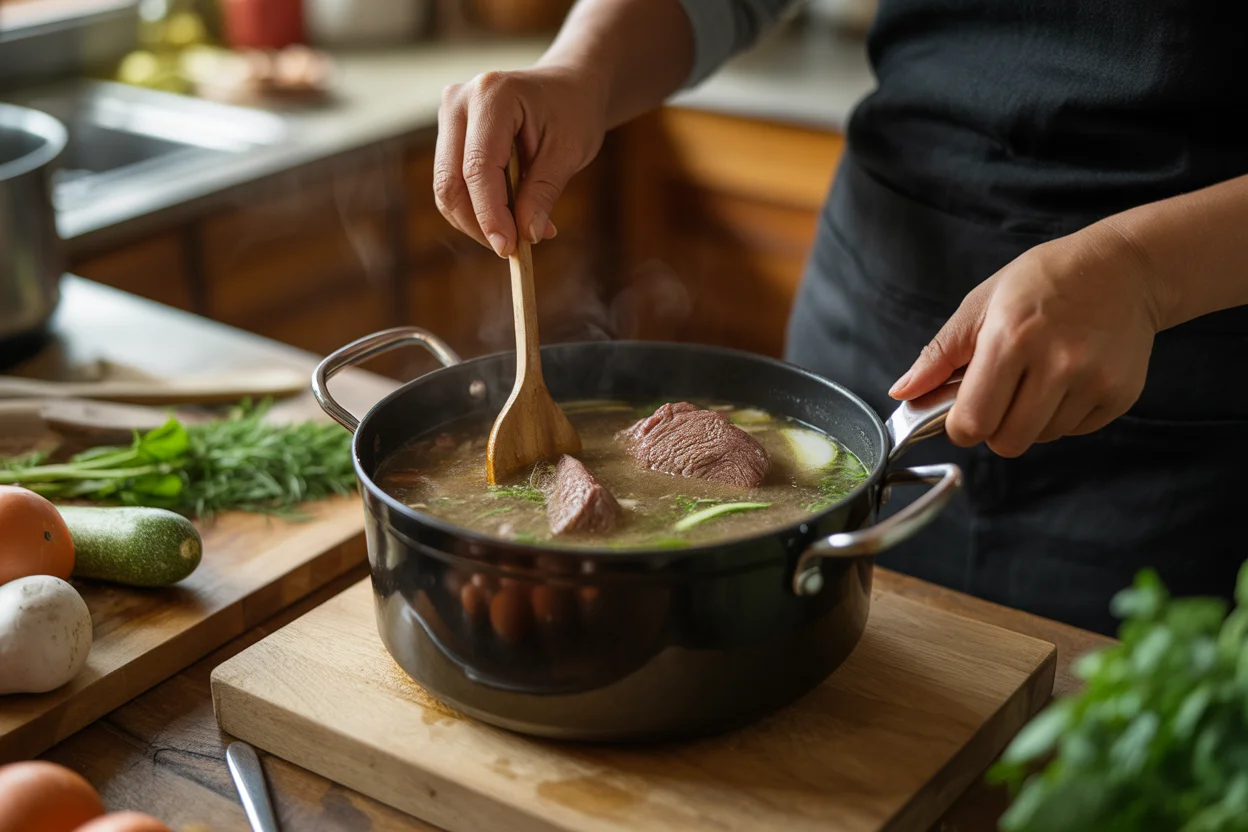
;
My Tips and Special Techniques for the Ultimate Beef Nilaga
Alright, so if you’re after the beef nilaga that’ll have everyone gulping down seconds (or thirds—no judgment), let me spill a few tricks I’ve picked up after years of cooking. Number one: use cold water to start boiling your beef. It helps draw out more flavor and, man, the broth ends up richer. I skim the scum off (sounds gross, but seriously, do it) as it comes to a soft boil so you don’t get cloudy soup.
Next, don’t rush it—let the beef simmer. Don’t you dare crank up that heat and walk away expecting magic in 20 minutes. This soup asks for patience. Also, add the tougher veggies (corn, potatoes) in before the leafy stuff. You want them nice and soft but not broken down into mush. Last thing? Season near the end so you don’t end up with salty broth as it reduces. Salt’s like lipstick, best to add it last!
The weirdest trick (that actually works): add a tiny piece of ginger to the pot. It brightens things up and—oddly—makes it feel way less heavy on the palate. Give that a whirl, and thank me later!
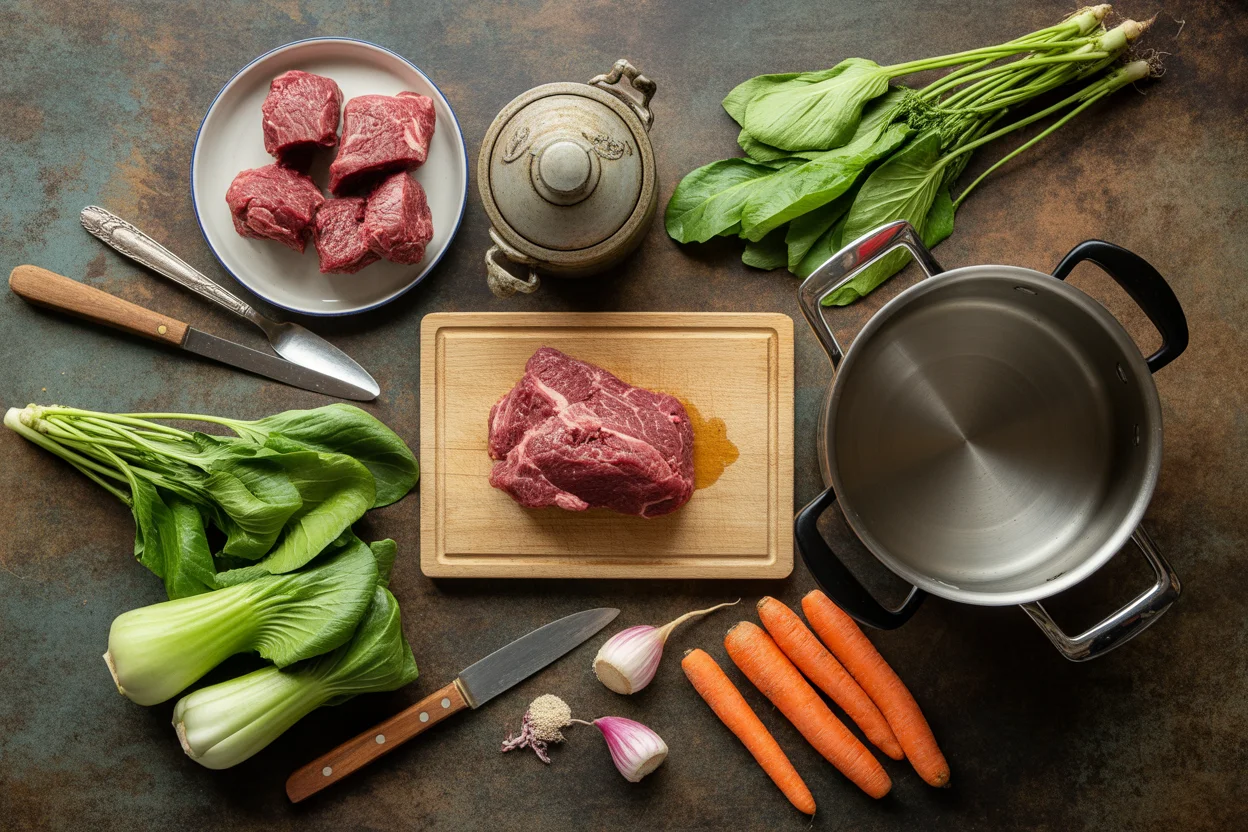
The Best Cuts of Beef to Use
Whew, don’t even get me started! Picking beef for nilaga can start arguments in some families. Short ribs are my go-to. They give you just enough meat, fat, and that fall-apart texture. If you see them at the store, grab them! Sometimes, I switch it up with beef shank. You get that nice bit of marrow (almost a nod to bulalo, you know?), and the broth will taste extra beefy.
Some folks throw in brisket or even chuck roast when they’re feeling thrifty. Works in a pinch, but honestly, if you want that next-level taste, a combination of shank and short ribs is unbeatable. Oh! Make sure to cut the big chunks—smaller is not better here because the beef shrinks, and you don’t want tiny, sad pieces by the end.
Sure, if you’re absolutely stuck, brisket’s fine, but… don’t tell my grandmother I said that.
What Vegetables Should I Use?
Classic beef nilaga uses the humble potato and some cabbage, absolutely. Corn on the cob, sliced into rounds, is classic—adds just a weird splash of faint sweetness that I must have. Saging na saba (the cooking banana) is sometimes added by the oldies, but I skip it unless it’s in season. Green beans or pechay (Filipino bok choy) work best. Sometimes I toss in carrots if I’m in a healthy mood, though strict traditionalists will give me side-eye for that.
Some folks have been known to empty their fridge’s veggie drawer into nilaga. Improvising’s kind of part of the experience. If your kiddos hate certain veggies, just ditch them—nilaga is shockingly forgiving. It’s almost more a vibe than a recipe at times.
Make-Ahead and Storage
Okay, so what if you end up with a pot big enough to feed the barangay (because… you probably will)? Beef nilaga is actually even better the next day. Letting it chill in the fridge overnight gives the flavors a chance to meld.
Just cool it down, then transfer the soup (with all the beef and veggies) into a sealed container. It keeps in the fridge for up to 3 days. If you’re prepping in advance, just hold off on adding the greens until you reheat so they don’t go limp and sad. Yes, you can freeze it—just make sure to leave out potatoes, as they go mushy after thawing.
Shoot, you know? That “leftover soup” thing is a myth here. We rarely have leftovers. And if we do, it gets demolished, fast.
Serving Suggestions
- Serve hot, always. Even in Manila’s wild heat!
- Top with a dash of patis (fish sauce) or calamansi for zing.
- White rice on the side is a non-negotiable.
- A slice of fresh chili for brave souls.
Common Questions
Can I cook beef nilaga in a slow cooker?
Oh, totally. Just throw everything in, let it run on low for 8 hours. Your house will smell like a Filipino nanay lives there.
What if I can’t find Filipino greens like pechay?
No stress. Substitute with baby bok choy or even spinach. It’s adaptable.
Can I make beef nilaga spicy?
Technically, the OG soup isn’t spicy—but no one’s stopping you. Add some chili flakes or a fresh siling labuyo if you want heat.
Why does my broth get cloudy?
Usually, you’re boiling too hard or not skimming enough. Gentle simmering’s the secret!
Are there other beefy Filipino soups like this?
Heck yes! Check out beef bulalo or even ilonggo kansi if you want something with a sharper kick.
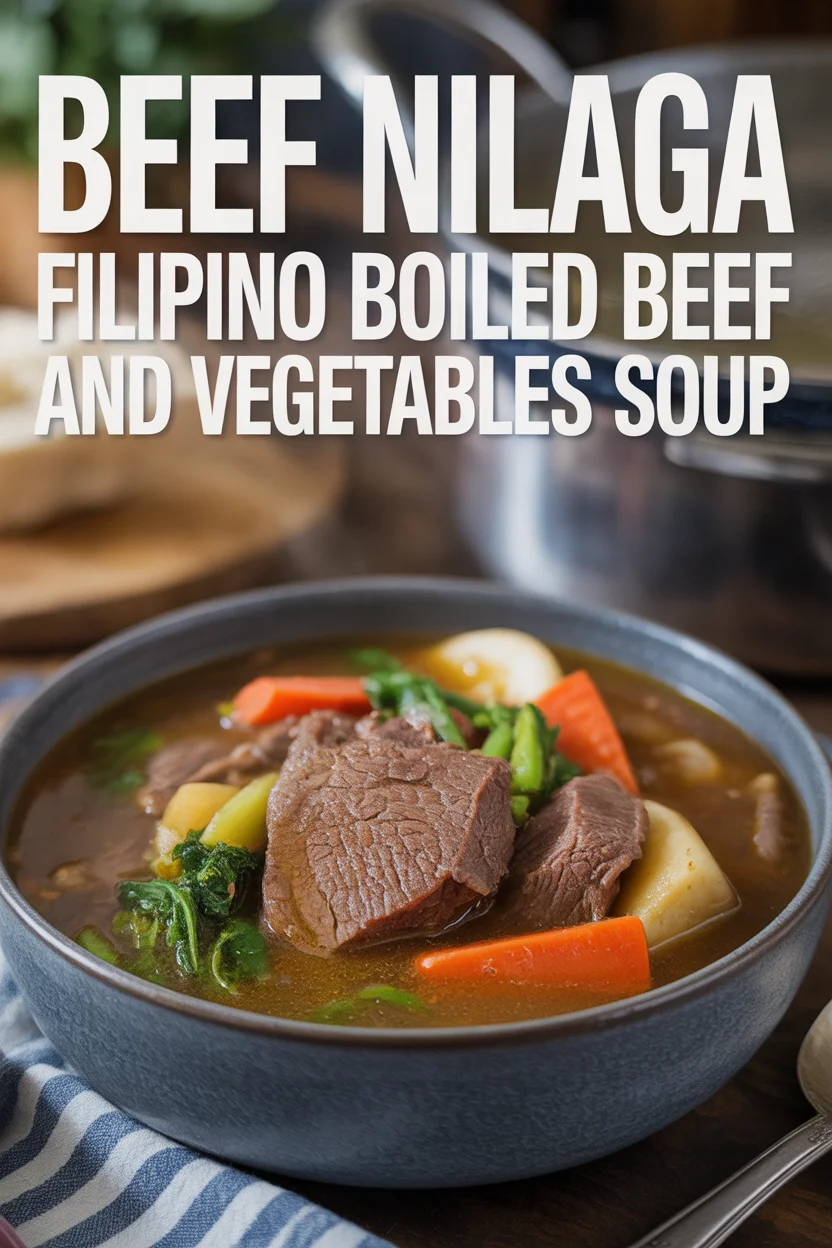
Honestly, beef nilaga warms the soul. It’s the kind of meal I’ll always come back to—simple, friendly, and welcoming like an old friend. For even more ideas, take a look at the step-by-step Beef Nilaga Recipe and if you want to keep digging into hearty Filipino classics, there’s also tips on how to make beef nilaga that’ll keep your pot simmering all year long. Whether you’re new to Filipino home cooking or you just want to make your next bowl a little more special, give it a try. Let me know how yours turns out; I really mean it!
Beef Nilaga
Ingredients
For the Soup Base
- 2 pounds beef short ribs Provides meatiness and flavor.
- 1 large onion Quartered.
- 4 cups water Use cold water to enhance the broth.
- 1 piece ginger Adds brightness to the soup.
- 1 tablespoon whole peppercorns
Vegetables
- 2 medium potatoes Peeled and cut into chunks.
- 2 cobs corn Sliced into rounds.
- 1 cup cabbage Chopped.
- 1 cup pechay Filipino bok choy.
- 1 cup green beans Trimmed and cut.
Serving
- to taste patis (fish sauce) For seasoning.
- to taste fresh chili Optional, for garnish.
Instructions
Preparation
- In a large pot, combine the beef short ribs, onion, ginger, peppercorns, and cold water. Bring to a soft boil.
- Skim off any scum that rises to the surface to keep the broth clear.
- Reduce heat to a simmer and cook for about 1.5 to 2 hours until the beef is tender.
Cooking
- Add the potatoes and corn. Cook until potatoes are tender, about 15 to 20 minutes.
- Add the cabbage and pechay; cook for another 5 minutes.
- Season with patis before serving.
